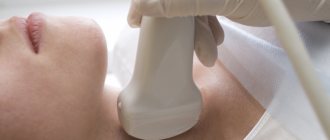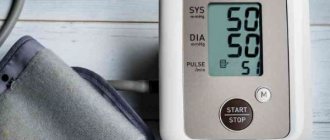Cats, like people, suffer from hypertension quite often. The owner, seeing that his pet is not feeling well, may not even suspect that he has high blood pressure. But this may indicate that the animal is seriously ill and needs urgent treatment. From this article you will learn what the normal blood pressure is for a cat and how to measure it for your pet.
General information
Hypertension is a persistent increase in blood pressure, leading to functional changes in the heart, central nervous system and kidneys. The physiology of animals is such that their cardiovascular system usually reacts by increasing pressure to stressful situations or significant stress on the heart. But if, after a short-term rise, the indicator does not return to normal, but decreases only under the influence of antihypertensive drugs, they speak of the presence of pathology.
Blood pressure is measured in millimeters of mercury and consists of two numbers:
- the first digit (systolic) - indicates the amount of blood pressure on the walls of blood vessels at the moment of maximum contraction of the heart muscle;
- the second number (diastolic) - indicates the force of pressure of the blood flow on the walls of blood vessels at the moment of maximum relaxation of the heart muscle.
The amount of blood pressure in the arteries depends on the frequency and strength of heart contractions, the tone of the vascular walls, and the volume of heart contractions.
How can I help you
Treatment is prescribed only by a veterinarian based on examination and collection of information, interviewing the owner of the mustachioed patient. Therapy is carried out in two parallel or sequential stages - the underlying disease is treated and blood pressure levels are normalized. During treatment, the functioning of the renal system and eyes must be monitored. Often, elimination of the underlying disease leads to normalization of blood pressure and the need for antihypertensive therapy disappears. The duration of the treatment course is determined strictly by a veterinary specialist. Often, antihypertensive medications remain on an ongoing basis.
- amlodipine (90-180 rubles, depending on the number of tablets in the package): orally from 0.5 to 1.25 mg/animal or 0.2 mg/kg once a day or once every 48 hours (two days). It is advisable to divide the tablet with a special tablet knife to reduce the risk of dosage violations. It is not addictive and the effectiveness of long-term use does not decrease.
- enalapril, benazepril (65-300 rubles, depending on the manufacturer) : orally 0.25-0.5 mg/kg of animal weight once a day. Often used in combinations at a dosage of 1.25-1.5 mg/animal per day. In very severe cases, the dose can be doubled, and after stabilization, the dose can be returned to normal levels.
- lisinopril (within 120-150 rubles/pack of 30 tablets): initial maintenance dose of 0.125 mg/kg of body weight, maximum permissible dose during the day – 0.5 mg/kg. Monitoring of kidney function is required. The course lasts 1-2 months, then you need to replace it with drugs that can be taken for a long time.
- sodium nitroprusside : for emergency relief of hypertensive crisis. The dosage is determined only by a specialist and is administered only in a hospital! Dose: 1.5-5 mcg/kg body weight at a rate of 1 minute. Strict monitoring of the animal’s condition is indicated, because a sharp drop in pressure can lead to disruption of brain function (ischemia).
In the presence of edema, diuretics are prescribed:
- furosemide (about 30 rubles/pack of 10 ampoules): 0.5-1 mg/kg per day orally or intramuscularly (injections act faster). The duration of use is determined by the veterinarian based on the general condition;
- torasemide (about 250 rubles/pack of 20 tablets): orally 0.05-0.1 mg/kg once a day. There are cats that are not sensitive to it - there is no pattern, just an individual reaction.
Classification of types of hypertension
Depending on the causes, essential (primary) and symptomatic (secondary) hypertension are distinguished. Primary hypertension develops as an independent disease. It often affects older animals. In this case, the cause of pressure in cats is a worn-out heart and weak vascular tone. The disease can also be hereditary.
Secondary hypertension, by definition, develops against the background of some underlying pathology. Most often, these are diseases of organs involved in the regulation of blood pressure (kidneys, adrenal glands, heart, thyroid gland and others). Secondary hypertension is more difficult to diagnose and treat.
Good to know
- Cats can hide pain
- Savannah or Serval cats. The main reasons for getting a pet
- Feline urinary retention in cats: a real emergency. Helping a cat who can't urinate
- 8 Causes of Pain in Domestic Cats. An Approach to Recognizing and Providing Therapeutic Care to Your Pet
- Orofacial pain syndrome in cats (causes, pathogenesis, diagnosis and therapy)
- Catnip for cats (uses, similar plants). The world of smells in the animal world
- Basic Tips. How to Care for Your Aging Cat? Helping an Elderly Cat
- Bathing cats (practical and theoretical aspects). Methodology, tools. How to dry it properly? Optimal water temperature?
- 5 Tips: How to Choose a Kitten That's Right for You!
- 4 Facts About Feline Pneumonia: What You Need to Know!
- 7 Causes of Sneezing in Cats: What Pet Owners Need to Know?
Blood pressure measurement
In order to measure blood pressure in a pet, the clinic usually has a special cat blood pressure monitor, and at home an ordinary human device will do.
Blood pressure can be measured by direct or indirect methods. The direct or invasive method is the most accurate. This is the so-called “peripheral artery catheterization” method. To measure blood pressure, the animal is given a sedative, after which an arterial catheter is installed in the artery, which is connected to a monitoring system. The method is called the “gold standard”, but is rarely used due to its complexity.
Indirect methods are used much more often, there are several of them:
- Oscillographic (measurement is carried out using an arterial oscilloscope);
- Dopplerography (a device operating on the Doppler principle is used);
- Photoplethysmographic (measurement by attenuation of infrared radiation is used).
All these methods have a similar operating principle. A special cuff is placed on the animal’s paw, into which air is pumped. The change in tissue volume at the moment of dosed compression and relaxation of blood vessels (impact of a pulse wave) is recorded.
The oscillographic method is considered the most accurate of all. It is necessary to take into account that the animal is most often under stress at the time of the procedure. This condition affects the a/d measurement results. In this regard, it is recommended to carry out measurements several times, taking the average value as true.
Why measure?
Measuring blood pressure in dogs and cats must be carried out periodically, so that if any disorders progress in the body, they can be noticed in a timely manner and eliminated before complications arise. Blood pressure must be measured at a preventive appointment, which helps reduce the risk of sudden development of a crisis, heart and kidney failure, endocrine and hormonal disorders. The indicators are monitored during and after surgical treatment, because during surgery there is always a risk of internal bleeding and a sharp drop in blood pressure.
Leading veterinary experts advise measuring blood pressure once a year in cats that have reached 5-7 years of age. If Murka is 10 years old or older, measurements should be taken at least once every six months.
High pressure features
Secondary hypertension in cats can develop against the background of serious pathologies, such as:
- diabetes;
- heart failure;
- endocrinological disorders (hyperthyroidism);
- Cushing's disease (increased synthesis of adrenal hormone);
- jades.
Pressure that lasts for a long time has a detrimental effect on the condition of the eyes. In addition, the walls of blood vessels are damaged and blood viscosity increases. A decrease in blood flow causes a decrease in the rate of metabolic processes in tissues. All this is fraught with serious consequences for the body. Therefore, during each routine preventive examination of your pet, it is necessary to measure the pressure.
It is also very important to periodically measure the a/d of individuals who are already 5-7 years old. At this age, animals become susceptible to primary hypertension.
Causes of secondary hypertension
They may be:
- Chronic renal failure
- Hyperthyroidism
- Cushing's syndrome
- Diabetes
- Acromegaly - disproportionate growth of certain parts of the skeleton due to excess growth hormone
- Polycythemia - an increase in the number of red blood cells per unit volume of blood
- Pheochromocytoma is a tumor of the adrenal glands in which increased secretion of adrenaline is observed.
The use of certain medications can lead to increased blood pressure (glucocorticoids, erythropoietins, sodium chloride, non-steroidal anti-inflammatory drugs). When prescribing such drugs, it is advisable to control blood pressure, especially in animals at risk. It should also be noted the conditions in which low blood pressure is observed. This occurs due to various diseases and requires mandatory correction.
Symptoms of the disease
High blood pressure primarily worsens the condition of the eyes, cardiovascular and nervous systems. The main symptoms of hypertension appear in these organs. The signs and pathophysiology of arterial hypertension in cats are as follows:
- Vision deteriorates sharply, dilated pupils and retinal hemorrhages are observed. In severe cases, retinal detachment, the development of glaucoma and even complete blindness can occur.
- On the part of the nervous system, unsteadiness of gait is often observed due to deterioration of coordination. Later lethargy, apathy, and increased drowsiness appear.
- From the respiratory system - shortness of breath, oxygen starvation.
- Increased swelling is also characteristic (the paws are especially swollen).
- Sometimes nosebleeds occur.
Treatment of the disease
Normal a/d in cats is on average 120 per 80 mmHg. An animal needs medical attention in the following cases:
- pressure above 150/100 mmHg. - with these numbers, constant monitoring is established;
- pressure above 160/120 mmHg. - begin antihypertensive therapy.
Treatment of hypertension in cats is usually carried out in several stages:
- Normalization of blood pressure with the help of antihypertensive drugs (Amlodipine, Benazepril, Lisinopril). In some cases, these drugs are prescribed to the animal for life.
- Elimination of edema using diuretics (Diacarb).
- Elimination of the cause of high blood pressure (in the case of secondary symptomatic hypertension).
- Constant monitoring of the condition of the kidneys and eyes.
During treatment, it is necessary to provide the animal with constant rest and protect it from stressful situations.
First aid for a pet
Treatment methods for hypertension and hypotension are fundamentally different, so self-prescription of drugs before diagnosis is not allowed. Taking pills gives only short-term results, since usually the main reason lies in a concomitant disease. Without eliminating it, only temporary relief of symptoms is possible. There is also a risk of choosing the wrong dosage, which can worsen the pet’s condition.
Thus, the only acceptable first aid is to immediately contact a veterinarian. Exceptions include only temporary fluctuations, when the reason lies in excessive activity or recently experienced stress (moving, the arrival of a new family member).








